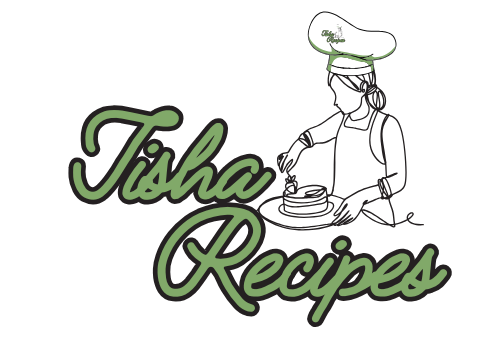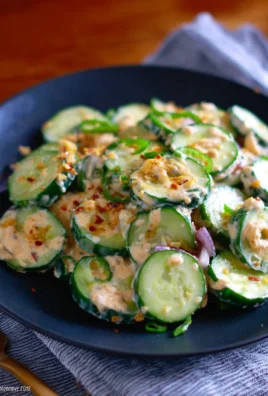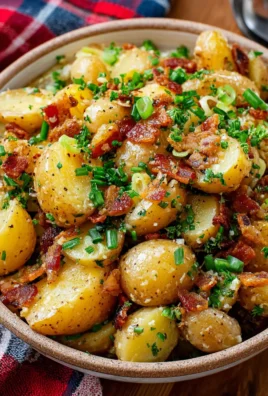
Broccoli cheese casserole is the ultimate comfort food, combining tender broccoli florets with creamy, gooey cheese in a warm, baked dish. This classic recipe is a staple in many households, often served during holiday feasts, potlucks, or weeknight dinners. Its versatility and simplicity make it a crowd-pleaser, while its hearty and satisfying flavors ensure it stands out as more than just a side dish.
The dish’s appeal lies in the perfect harmony of textures and flavors—soft, slightly crisp broccoli is enveloped in a rich, cheesy sauce, topped with a golden, crispy crust. Whether it’s a nostalgic family favorite or a new addition to your culinary repertoire, this guide will walk you through every step of preparing the perfect broccoli cheese casserole.
Overview of Broccoli Cheese Casserole
Broccoli cheese casserole is a baked dish that brings together a combination of fresh or frozen broccoli, a creamy cheese sauce, and various topping options, often including breadcrumbs, crackers, or even crispy onions. The dish can be adapted to suit individual tastes, making it a versatile choice for any occasion.
Variations and Adaptations
- Traditional Broccoli Cheese Casserole: The classic recipe features cheddar cheese, a cream-based sauce, and buttery breadcrumbs.
- Low-Carb Version: Replace traditional thickeners with almond flour or cream cheese for a keto-friendly alternative.
- Vegan Variation: Use plant-based cheeses, cashew cream, and a non-dairy milk base to create a vegan-friendly casserole.
- Loaded Casserole: Incorporate additional ingredients like cooked bacon, diced chicken, or mushrooms for a heartier version.
- Spicy Twist: Add jalapeños or red pepper flakes for a spicy kick.
These variations demonstrate the flexibility of the dish, allowing you to cater to dietary preferences or explore new flavor combinations.
Brief History and Cultural Significance
The concept of casseroles dates back centuries, but the modern version gained popularity in the United States during the mid-20th century. Easy-to-make dishes became a staple in households due to their convenience and ability to feed large groups economically. Broccoli cheese casserole emerged as a favorite, offering a delicious way to incorporate vegetables into a meal.
Cultural Impact
This dish holds a special place in many holiday traditions, particularly in American homes. It is often featured in Thanksgiving or Christmas spreads, celebrated for its comforting, indulgent flavors. Broccoli cheese casserole has also found its way into regional cuisines, with variations reflecting local ingredients and cooking styles.
Preparation Phase & Tools to Use
Time and Yield
Broccoli cheese casserole can be prepared quickly, making it ideal for both casual and formal gatherings. Depending on the recipe’s complexity, it can serve as a side dish for up to 8 people or as a main course when paired with complementary dishes.
Essential Tools and Equipment
- Cutting Board and Sharp Knife: For trimming and cutting broccoli florets evenly.
- Mixing Bowls: Used for combining the cheese sauce and broccoli mixture.
- Saucepan: To prepare the cheese sauce, ensuring it’s smooth and lump-free.
- Casserole Dish: A baking dish, typically 9×13 inches, to assemble and bake the casserole.
- Whisk and Spatula: To mix the cheese sauce thoroughly and scrape the sides of the saucepan.
- Measuring Cups and Spoons: Ensuring precise measurements for the sauce and toppings.
- Oven or Broiler: For baking and achieving the perfect golden-brown crust.
Importance of Each Tool
Using the right tools ensures efficiency and consistency in preparation. For instance, a whisk helps create a velvety cheese sauce, while a well-sized casserole dish ensures even cooking and prevents spillage.
Preparation Tips
- Broccoli Selection: Use fresh broccoli for the best texture and flavor. If using frozen broccoli, thaw and drain it thoroughly to remove excess moisture.
- Cheese Choices: Sharp cheddar is a classic choice, but mixing it with Gruyère, Parmesan, or Monterey Jack can add depth to the flavor.
- Prepare Ingredients in Advance: Pre-measure and prep ingredients to streamline the cooking process.
- Layer Strategically: Start with a base of broccoli, pour the cheese sauce evenly, and finish with a generous topping for a balanced bite.
- Avoid Overcooking: Slightly undercook the broccoli before baking to ensure it retains its texture after baking.
Ingredients List (with Measurements)
Core Ingredients
- Broccoli: 1½ pounds of fresh broccoli florets or 2 packages (10 ounces each) of frozen broccoli.
- Cheese: 2 cups sharp cheddar cheese, shredded.
- Cream Base: 1 cup heavy cream or half-and-half.
- Thickener: 2 tablespoons all-purpose flour or cornstarch.
- Butter: 2 tablespoons, unsalted.
- Onions: ½ cup, finely chopped (optional for added flavor).
- Seasonings: 1 teaspoon garlic powder, ½ teaspoon paprika, salt, and black pepper to taste.
Topping Options
- Breadcrumbs: 1 cup, toasted with butter for a crispy finish.
- Crackers: 1 cup, crushed, such as Ritz or saltine crackers.
- Parmesan Cheese: ½ cup, grated, for an extra cheesy crust.
- Crispy Onions: 1 cup, for added crunch and flavor.
Optional Additions
- Proteins: Cooked chicken, bacon, or ham, diced.
- Vegetables: Mushrooms, diced bell peppers, or cauliflower florets.
- Spices: Red pepper flakes, mustard powder, or nutmeg for a hint of warmth.
Step-by-Step Instructions
Step 1: Prepare the Broccoli
- Rinse fresh broccoli under cold water and pat dry. Cut into bite-sized florets.
- Steam or blanch the broccoli until just tender but still vibrant green. Drain and set aside.
Step 2: Make the Cheese Sauce
- In a saucepan, melt the butter over medium heat. Add the chopped onions, if using, and sauté until translucent.
- Sprinkle in the flour and whisk continuously for 1-2 minutes to create a roux.
- Gradually pour in the cream, whisking constantly to avoid lumps.
- Lower the heat and add shredded cheddar cheese. Stir until melted and smooth.
- Season the sauce with garlic powder, paprika, salt, and pepper. Adjust seasoning to taste.
Step 3: Assemble the Casserole
- Preheat the oven to 375°F (190°C).
- Grease the casserole dish lightly with butter or cooking spray.
- Spread the steamed broccoli evenly across the bottom of the dish.
- Pour the cheese sauce over the broccoli, ensuring it coats all the florets.
Step 4: Add the Topping
- In a small bowl, mix breadcrumbs or crackers with melted butter.
- Sprinkle the topping evenly over the cheese sauce.
- For extra flavor, add grated Parmesan or crispy onions on top.
Step 5: Bake
- Place the casserole dish in the preheated oven and bake for 20-25 minutes, or until the top is golden and bubbly.
- If a crispier topping is desired, switch to the broiler for the last 2-3 minutes of baking.
Step 6: Serve
- Remove the casserole from the oven and let it cool for 5 minutes before serving.
- Garnish with fresh herbs, such as parsley or chives, for a finishing touch.
Side Dish Recommendations
Broccoli cheese casserole is a versatile dish that pairs wonderfully with a wide variety of sides, enhancing the dining experience with complementary flavors and textures. Below are eight side dishes that can be served alongside this comforting casserole:
1. Garlic Mashed Potatoes
The creamy, buttery texture of garlic mashed potatoes complements the rich, cheesy goodness of the casserole. The mild garlic flavor adds depth to the meal without overpowering the main dish.
2. Roasted Vegetables
A medley of roasted carrots, zucchini, and bell peppers brings vibrant colors and earthy flavors to the table. The roasted vegetables’ caramelized sweetness contrasts beautifully with the cheesy casserole.
3. Buttery Dinner Rolls
Soft, fluffy dinner rolls are perfect for soaking up the cheesy sauce from the casserole. A simple homemade recipe or store-bought rolls brushed with garlic butter make for a delightful pairing.
4. Grilled Lemon Chicken
The bright, citrusy notes of grilled lemon chicken cut through the richness of the casserole, creating a balanced meal. The smoky, charred edges of the chicken provide a satisfying contrast to the creamy dish.
5. Caesar Salad
A classic Caesar salad, with its crisp romaine lettuce, tangy dressing, and crunchy croutons, adds a refreshing element to the meal. The acidity of the dressing complements the creamy casserole.
6. Wild Rice Pilaf
A nutty wild rice pilaf with herbs and toasted almonds offers a hearty and flavorful side. The subtle flavors of the pilaf allow the broccoli cheese casserole to shine as the centerpiece of the meal.
7. Sautéed Mushrooms
Savory sautéed mushrooms in garlic butter enhance the umami profile of the meal. The mushrooms’ earthy flavor pairs wonderfully with the cheesy sauce and tender broccoli.
8. Cranberry Walnut Slaw
For a touch of sweetness and crunch, serve a cranberry walnut slaw. The tart cranberries and crunchy nuts bring contrast to the dish while adding a pop of color to the plate.
Each of these sides can elevate your meal, transforming broccoli cheese casserole from a simple dish into a well-rounded feast.
Nutritional Information & Health Benefits
Broccoli cheese casserole is not only comforting but can also be nutritious when prepared with the right ingredients. Understanding its nutritional content and health benefits allows you to enjoy it guilt-free or modify the recipe to align with your dietary goals.
Nutritional Breakdown
- Broccoli: A powerhouse vegetable rich in vitamins C and K, dietary fiber, and antioxidants. It supports immune health, bone strength, and digestion.
- Cheese: A source of calcium and protein, cheese contributes to bone health and muscle repair. However, it is calorie-dense, so moderation is key.
- Cream or Milk Base: Provides healthy fats and additional calcium, especially when using whole milk or cream alternatives like almond milk.
- Breadcrumbs or Crackers: While they add texture and flavor, choosing whole-grain options can boost fiber content.
Customizing for Health
- Lowering Calories: Swap heavy cream for reduced-fat milk or Greek yogurt to cut down on calories while maintaining creaminess.
- Reducing Sodium: Use low-sodium cheese and seasonings to make the dish heart-healthier.
- Boosting Fiber: Add whole grains to the topping or mix in fiber-rich vegetables like spinach or kale.
- Keto-Friendly Adaptations: Replace breadcrumbs with crushed pork rinds or almond flour for a low-carb option.
Health Benefits
- Immune Support: Broccoli’s high vitamin C content helps boost immunity and fight off illnesses.
- Bone Strength: The calcium and vitamin K in broccoli and cheese promote healthy bones and reduce the risk of osteoporosis.
- Heart Health: When prepared with healthier fats and reduced sodium, this dish can contribute to cardiovascular health.
- Eye Health: Broccoli contains beta-carotene, which supports vision and reduces the risk of age-related macular degeneration.
By understanding the nutritional profile of broccoli cheese casserole, you can make informed choices to create a dish that is both delicious and nourishing.
Common Mistakes to Avoid & How to Perfect the Recipe
Even the most seasoned cooks can encounter challenges when preparing broccoli cheese casserole. Avoiding common pitfalls and following these tips will help you achieve a flawless dish every time.
Common Mistakes
- Using Overcooked Broccoli
- Overcooked broccoli becomes mushy and loses its vibrant color. Steam or blanch the broccoli just until tender-crisp before assembling the casserole.
- Neglecting to Drain Excess Water
- Whether using fresh or frozen broccoli, failing to drain it thoroughly can lead to a watery casserole. Pat the broccoli dry with a paper towel before mixing it with the cheese sauce.
- Unevenly Distributed Cheese
- Skimping on mixing the cheese sauce evenly can result in bites that are either overly cheesy or lacking in flavor. Toss the broccoli thoroughly to coat every piece.
- Burning the Topping
- Overbaking or broiling for too long can burn the topping. Keep a close eye on the casserole during the final minutes of baking.
- Not Adjusting Seasoning
- Under-seasoning the dish can make it bland. Taste the cheese sauce before combining it with the broccoli to ensure a balanced flavor.
How to Perfect the Recipe
- Season Every Layer: Add a pinch of salt and pepper to the broccoli and cheese sauce separately to enhance flavor throughout the dish.
- Mix Cheeses: Combining sharp cheddar with creamy cheeses like Gruyère or Monterey Jack adds complexity to the flavor.
- Balance Textures: Ensure the broccoli retains some crunch and that the topping is golden and crispy for a satisfying contrast.
- Bake in the Right Dish: Use a glass or ceramic casserole dish for even heat distribution, preventing overcooking or uneven textures.
- Let It Rest: Allow the casserole to cool for a few minutes after baking. This helps the cheese sauce thicken and makes serving easier.
Tips, Notes, Storing, and Reheating
Tips for Perfect Broccoli Cheese Casserole
- Choose Fresh Ingredients: Fresh broccoli has a better texture and flavor than frozen. If using frozen, ensure it’s thoroughly thawed and drained.
- Customize the Cheese: Experiment with different cheeses to suit your preferences. Sharp cheddar is classic, but Gruyère, Parmesan, or even blue cheese can add depth.
- Pre-Cook Broccoli: Blanch or steam the broccoli until just tender to prevent a mushy texture after baking.
- Avoid a Watery Casserole: Pat all ingredients dry before assembling the dish. Excess water can dilute the cheese sauce and make the casserole soggy.
- Evenly Spread Toppings: For a golden crust, distribute breadcrumbs or crackers evenly and drizzle melted butter on top.
- Boost Flavor: Add spices like paprika, mustard powder, or nutmeg to enhance the cheesy sauce. Freshly cracked black pepper works wonders too.
- Prepare in Advance: Assemble the casserole a day ahead and refrigerate it. Bake it just before serving to save time without compromising flavor.
Notes
- Texture Tips: For a crunchier topping, use panko breadcrumbs or crushed crackers mixed with Parmesan and melted butter.
- Seasoning Adjustments: Taste the cheese sauce before mixing it with the broccoli, as some cheeses can be saltier than others.
- Serving Suggestions: This casserole pairs well with roasted meats, salads, or crusty bread for a complete meal.
- Dietary Alternatives: Substitute almond flour or gluten-free breadcrumbs for a gluten-free version. Use plant-based cheese and milk for a vegan variation.
Storing Broccoli Cheese Casserole
Proper storage ensures the dish retains its flavor and texture.
- Refrigeration: Allow the casserole to cool completely before transferring it to an airtight container or covering it tightly with plastic wrap. Store in the refrigerator for up to 3-4 days.
- Freezing: Broccoli cheese casserole can be frozen, but note that the texture of the broccoli may soften after thawing. To freeze:
- Assemble the casserole without baking.
- Wrap it tightly in plastic wrap and then aluminum foil.
- Label with the date and freeze for up to 2 months.
- Thawing: Defrost in the refrigerator overnight before baking. Add fresh breadcrumbs or crackers to the top before reheating for optimal crispiness.
Reheating Broccoli Cheese Casserole
- Oven Reheating: Preheat the oven to 350°F (175°C). Cover the casserole with aluminum foil to prevent the top from burning. Heat for 20-25 minutes, or until warmed through.
- Microwave Reheating: For smaller portions, place the casserole on a microwave-safe plate and heat on medium power in 1-minute increments until heated thoroughly.
- Reheating from Frozen: Bake the frozen casserole in a preheated oven at 375°F (190°C) for 45-60 minutes. Remove the foil in the last 10 minutes to crisp the topping.
FAQs
1. Can I make broccoli cheese casserole ahead of time?
Yes, you can assemble the casserole a day in advance and refrigerate it. Bake it just before serving for the freshest taste.
2. Can I use frozen broccoli instead of fresh?
Absolutely! Thaw and drain frozen broccoli thoroughly to avoid excess moisture in the dish.
3. How can I make the casserole healthier?
Use reduced-fat cheese, low-fat milk, or Greek yogurt in the cheese sauce. Add extra vegetables like cauliflower or carrots to boost nutrition.
4. Can I substitute other vegetables for broccoli?
Yes, you can replace broccoli with cauliflower, green beans, or zucchini. A mix of these vegetables also works well.
5. Why is my casserole watery?
Excess moisture from broccoli or improperly thickened cheese sauce can make the casserole watery. Ensure vegetables are drained and pat dry before use.
6. What can I use instead of breadcrumbs for the topping?
Crushed crackers, panko, potato chips, or even crumbled pretzels make excellent alternatives for breadcrumbs.
7. How do I prevent the cheese sauce from curdling?
Use low to medium heat while making the cheese sauce and stir constantly. Avoid using pre-shredded cheese, as it often contains anti-caking agents that can affect texture.
8. Can I freeze leftovers?
Yes, you can freeze leftover casserole. Portion it into airtight containers and freeze for up to 2 months.
9. What proteins pair well with broccoli cheese casserole?
Grilled chicken, roasted turkey, or baked salmon are excellent protein options to serve alongside the casserole.
10. Is this dish gluten-free?
The traditional recipe is not gluten-free due to the flour in the cheese sauce and breadcrumbs. However, gluten-free alternatives can easily be used.
Conclusion
Broccoli cheese casserole is a beloved classic that combines wholesome vegetables with rich, creamy cheese for a dish that delights all ages. Its versatility allows it to shine as a main course, a side dish, or even a potluck favorite. With the tips and techniques outlined in this guide, you can perfect your casserole-making skills, customize it to suit dietary needs, and create a dish that will be requested time and again.
Whether you’re preparing it for a special occasion or a simple family dinner, broccoli cheese casserole is sure to bring comfort and joy to your table.




Leave a Comment